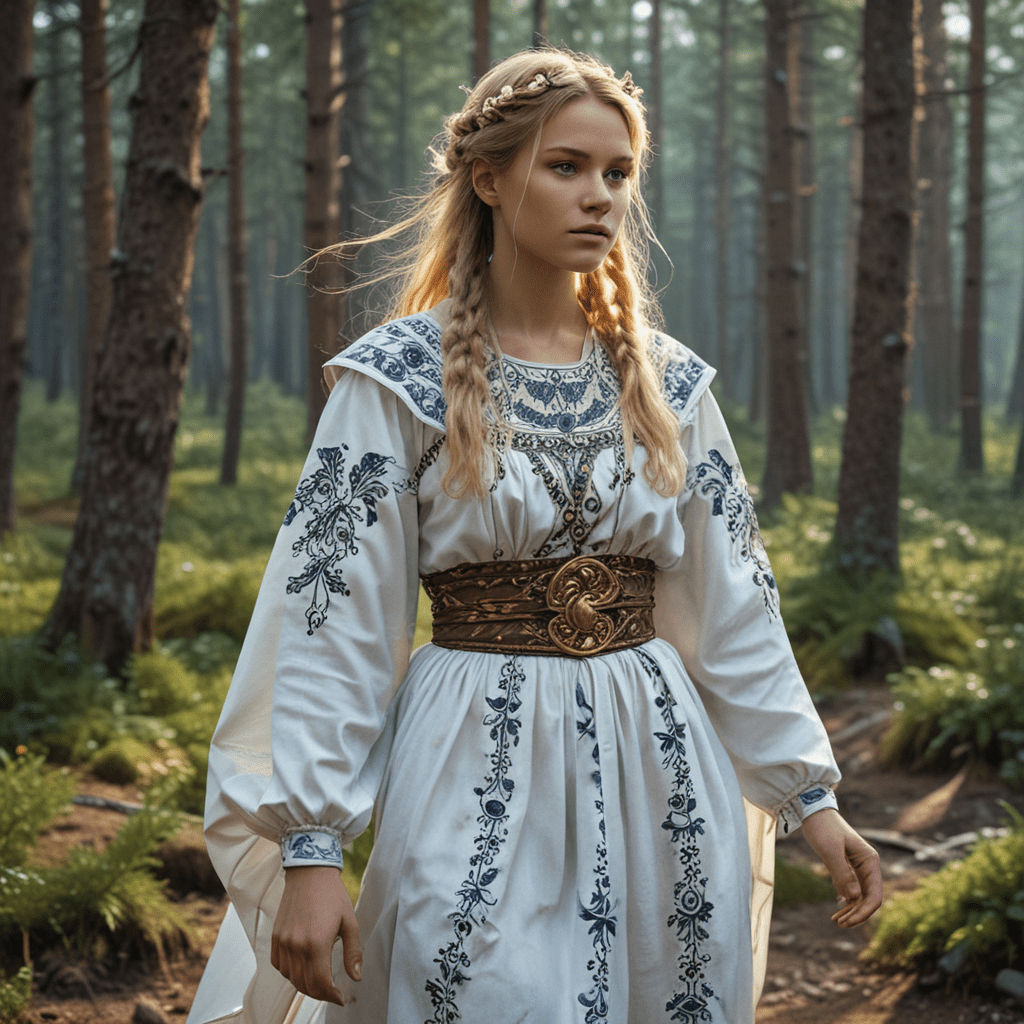The Influence of Finnish Mythology on Traditional Clothing
I. Introduction
Finnish mythology, steeped in ancient traditions and beliefs, has profoundly influenced traditional clothing in Finland. This rich tapestry of myths and legends has imbued clothing with symbolic meanings and aesthetic elements that reflect the spiritual and cultural identity of the Finnish people.
II. Historical and Cultural Context of Finnish Mythology
Finnish mythology evolved over centuries, reflecting the unique experiences and beliefs of the Finnish people. Rooted in animism and shamanism, it is characterized by a deep reverence for nature and the interconnectedness of all living things. These beliefs found expression in traditional clothing, which served not only as a covering but also as a means of communicating with the supernatural realm.
III. Supernatural Beings in Finnish Mythology and Their Depiction on Clothing
Finnish mythology is populated by a myriad of supernatural beings, each with its own distinct characteristics and associations. These beings have inspired symbolic representations on clothing, influencing both the design and ornamentation of garments.
A. Fairies and Elves
According to Finnish mythology, fairies and elves dwell in forests and meadows, possessing magical powers and a connection to nature. Their presence is often depicted on clothing through delicate embroidery and intricate beadwork, evoking their ethereal and otherworldly nature.
B. Water Spirits
Water spirits, known as Näkki, inhabit lakes and rivers, often portrayed as alluring yet dangerous figures. Their depiction on clothing serves as a reminder of the importance of respecting water bodies and the dangers lurking beneath their surface.
C. Forest Guardians
Forest guardians, such as the Hiisi, are powerful beings that protect the forests and their inhabitants. Their presence is often symbolized on clothing through images of trees, leaves, and other elements of the natural world.
IV. Symbolism of Colors and Patterns
The colors and patterns used in Finnish traditional clothing are imbued with deep symbolic meanings. Each color evokes a specific association, reflecting the beliefs and values of the Finnish people.
A. White and Purity
White is a prevalent color in Finnish traditional clothing, symbolizing purity, innocence, and new beginnings. It is often worn for special occasions, such as weddings and baptisms, and serves as a reminder of the wearer's connection to the divine.
B. Green and Nature
Green is another significant color in Finnish mythology, representing the abundance and vitality of nature. Garments adorned with green patterns evoke the beauty and serenity of the Finnish landscape, honoring the deep bond between the Finnish people and their natural surroundings.
C. Red and Power
Red is a color associated with strength, courage, and fertility. It is often used on ceremonial clothing, such as that worn by shamans and warriors. Red symbolizes the wearer's connection to the powerful forces of nature and their readiness to confront challenges.
V. Ritual and Ceremonial Clothing
Traditional Finnish clothing played a significant role in rituals and ceremonies, serving as a sacred adornment that enhanced the spiritual significance of these events.
A. Birth and Baptism
For birth and baptism ceremonies, white garments were worn to symbolize the purity and innocence of the newborn child. Embroidered patterns representing protective symbols were often incorporated to ward off evil spirits and ensure the child's well-being.
B. Marriage
Marriage ceremonies involved elaborate traditional clothing that reflected the sacredness of the union. The bride typically wore a white dress adorned with intricate embroidery, while the groom wore a suit made of dark fabrics such as wool or linen.
C. Death and Mourning
Death and mourning rituals were accompanied by specific clothing customs. Black garments were worn to symbolize grief and respect for the deceased, while the use of embroidered symbols represented the continuation of the soul's journey after death.
VI. The Influence of Epic Poems
Finnish mythology is deeply entwined with two epic poems: the Kalevala and the Kanteletar. These poems narrate the adventures and exploits of mythical heroes and provide inspiration for traditional clothing designs.
A. The Kalevala
The Kalevala, Finland's national epic, portrays the adventures of Väinämöinen, a powerful shaman and master of magic. His magical items, such as the Sampo, a mythical mill of abundance, have inspired symbolic representations on clothing.
B. The Kanteletar
The Kanteletar is a collection of folk songs that celebrate love, loss, and the beauty of nature. The themes and imagery found in these songs have influenced the design and ornamentation of traditional clothing, evoking the emotions and experiences of the Finnish people.
VII. Modern Interpretations and Revivals
In contemporary times, there has been a resurgence of interest in Finnish mythology and its influence on traditional clothing. Modern designers and fashion enthusiasts are incorporating traditional motifs and symbols into their creations, blending the past with the present.
VIII. Preservation and Transmission
The preservation and transmission of Finnish traditional clothing are essential for maintaining the cultural heritage of the Finnish people. Museums, cultural organizations, and skilled artisans play a crucial role in safeguarding and passing down techniques and designs to future generations.
IX. Cultural Significance and Identity
Finnish traditional clothing holds immense cultural significance, serving as a tangible expression of the nation's identity. It represents the deep connection between the Finnish people and their mythology, history, and natural surroundings. By wearing traditional clothing, Finns honor their cultural heritage and foster a sense of belonging and pride.
X. Conclusion
Finnish mythology has profoundly influenced traditional clothing, imbuing it with symbolic meanings, aesthetic elements, and ritual significance. From the depiction of supernatural beings to the symbolism of colors and patterns, traditional Finnish clothing embodies the cultural identity and beliefs of the Finnish people. Its preservation and transmission ensure that this rich heritage continues to inspire and captivate generations to come.
Frequently Asked Questions (FAQs)
Q: What are some common mythological symbols found on Finnish clothing?
A: Fairies and elves, water spirits, forest guardians, and mythical items like the Sampo.
Q: What colors are prevalent in Finnish traditional clothing and what do they represent?
A: White (purity), green (nature), and red (power).
Q: How was traditional clothing used in rituals and ceremonies?
A: Clothing played a sacred role in birth and baptism, marriage, and death and mourning rituals, symbolizing important transitions and events.
Q: How have epic poems influenced Finnish clothing?
A: The Kalevala and the Kanteletar have inspired designs and motifs on clothing, reflecting the adventures of mythical heroes and the beauty of nature.
Q: What is the significance of traditional clothing in Finnish culture today?
A: It serves as a tangible expression of the nation's identity, fostering a sense of belonging and pride, and connecting the Finnish people to their cultural heritage.


